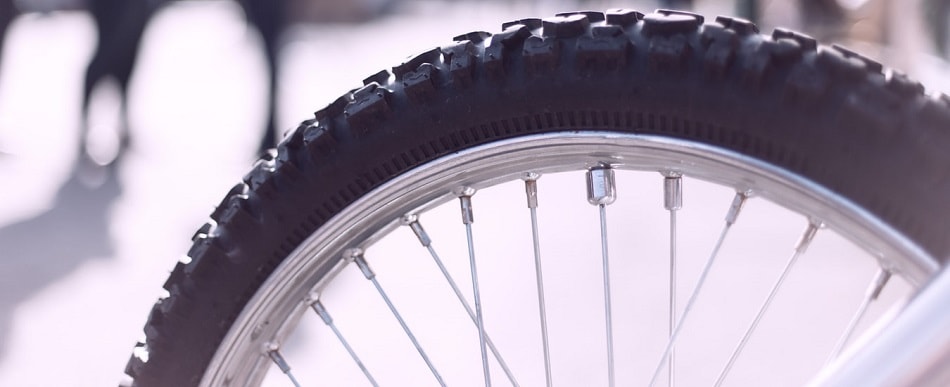The traditional tire design of inner tube and outer casing died years ago in cars, and for good reason. It’s a fiddly, complex system that doesn’t handle punctures well. Many bikes still use this kind of tire but increasingly tubeless bike tires are taking over. So, how do tubeless bike tires work? Read on to discover the whys and wherefores of the tubeless bike tyre.

The problem with inner tubes and why you don’t want them
Have you ever had a bike puncture and done the whole rigmarole with a bucket, the inner tube and a bike inner tube repair kit? It’s a pain isn’t it? So, by getting rid of the inner tube, and using a self sealing tubeless tyre, you save on all that grief but also reduce the likelihood of a slow or fast puncture ruining your journey.
Are Tubeless Bike Tires Good
There are many kinds of tubeless tyres but generally speaking they are constructed using a thin liner on the inside of the tyre, made from butyl. That acts as a kind of self-sealant to keep air in the tire. Some tires also have an additional butyl coating or injection at the bead boundary. That is there so that the tire is more likely to remain seated securely with the wheel rim. That feature is especially useful with BMX bikes or Mountain bikes, whose tires take a real pounding and sometimes get stuck laterally. Tires with inner tubes are far more prone to take damage in these conditions.
In addition to this later benefit, a straight small puncture is less of an issue with tubeless. A tubeless design allows the object that has punctured a hole in the tire (say a thorn or tack), to either be dropped back onto the ground or held in the air volume. This is where the self-sealant then kicks in, which seals the hole, with reduced air loss. In fact you might carry on riding unaware you just had a puncture.
Tubeless also has other advantages. For example they eliminate any kind of tube pinching (which is the bane of DIY tire fitting). When mountain biking, you can run them at lower pressure to achieve a bigger surface area and better traction and grip, without the risk of a flat as a result of strikes to the tire rim.
For those who obsess about bike weight, it’s good news too. The sealant typically used is much lighter than the inner tube that is otherwise fitted with the added benefit of lower rolling resistance. This benefit is due to the lack of friction between the tire and the tube, which is especially the case when the tire becomes deformed. In some cases you get about 10% reduction, in other cases it can reduce up to 15% of that irritating rolling resistance. In a race (especially a long one) that can make a real difference.
Some riders also feel the generally reduced stiffness of the tubeless tire compared to a conventional tubed tire, gives a more connected feeling for the trail, track or road.
The case for the defence
It’s only fair to finally point out the advantages of tubed tires – there are a few. The main disadvantage of tubeless tires is that the tire sealant has to be manually (and messily) filled into the tire, during fitting, and it needs to be done right – it can take a bit of practice. Poor fitting can lead to problems over time – more so, some feel, than tubed. Time is also a factor in tubeless longevity, due to the fact the sealant level and condition needs to be monitored at intervals. This is because sealant compounds will age over time and (especially if you live somewhere hot) will eventually dry up over time.
So, that’s how tubeless works, plus the many pros (and few cons) of tubeless tires. Thanks for reading.






